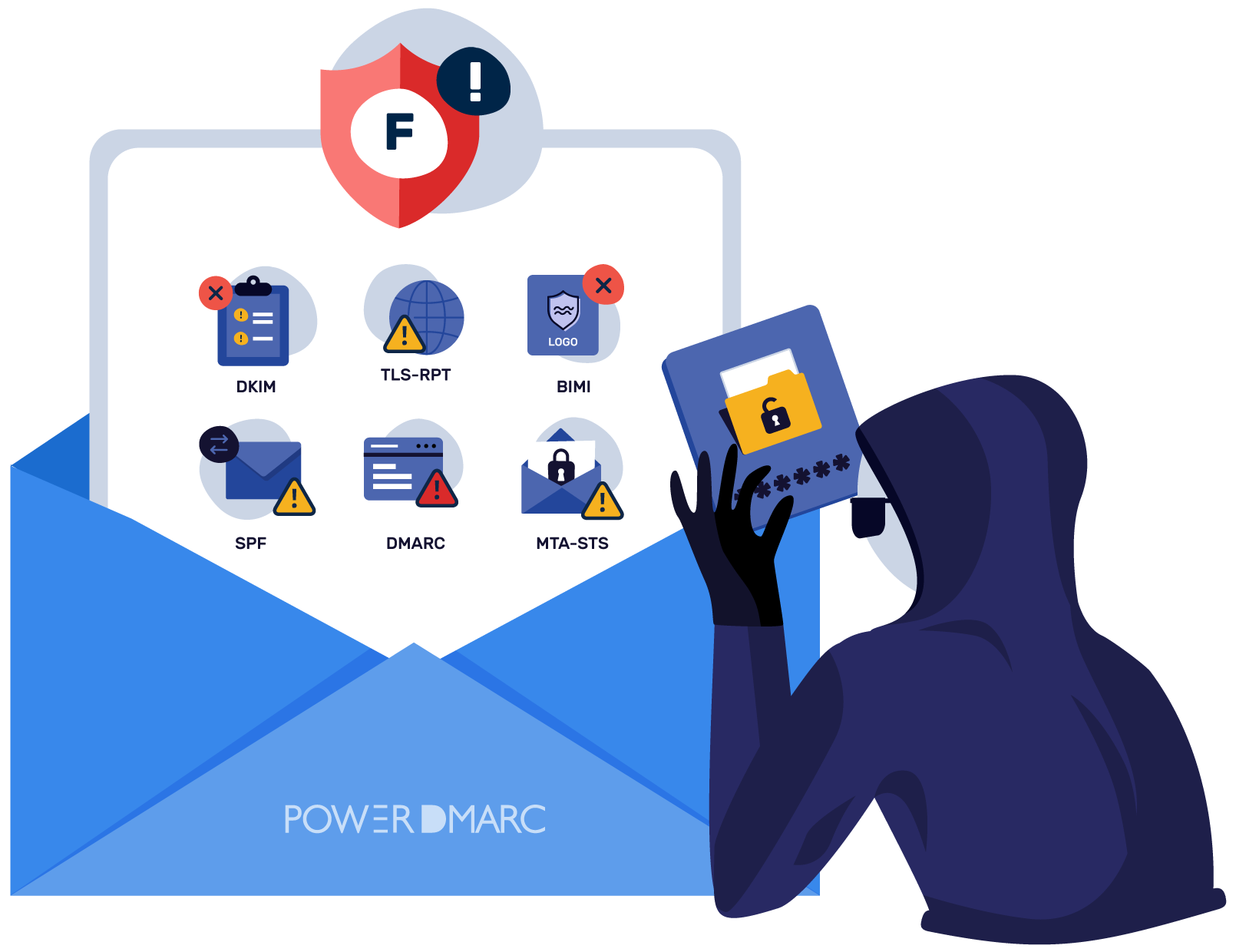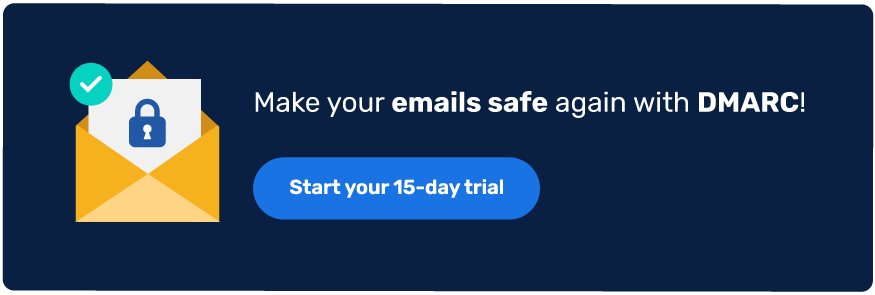Do you know how secure your domain is? Most organizations operate with the assumption that their domains are highly secure and in a short while, they learn it isn’t the case. One of the tell-tale signs of a low security score is if your domain name is being spoofed – this means that someone is using your domain in order to impersonate you (or create confusion) and fool email recipients. But why should you care? Because these spoofing activities can potentially endanger your reputation.
In a world full of domain impersonators, email domain spoofing shouldn’t be something that companies take lightly. Those who do could be putting themselves, as well as their clients at risk. A domain’s security rating can have a huge effect on whether or not you get targeted by phishers looking to make a quick buck or to use your domain and brand to spread ransomware without you being aware!
Check your domain’s security rating with our Free DMARC Lookup tool. You may be surprised by what you learn!
Key Takeaways
- Many organizations mistakenly believe their domains are secure until they experience domain spoofing incidents.
- Email spoofing can seriously damage a brand’s reputation and can put both the organization and its clients at risk.
- Low email security can expose organizations to phishing attempts and other cyber threats that may lead to significant financial losses.
- Implementing email authentication protocols like SPF, DKIM, and DMARC is essential to enhance domain security and prevent spoofing.
- Organizations of all sizes need to evaluate their email security posture, as attackers often target vulnerabilities regardless of business size.
How Do Attackers Spoof Your Domain?
Email spoofing can occur when an attacker uses a forged identity of a legitimate source, usually with the intent of impersonating another person or masquerading as an organization. It can be carried out by:
Manipulating the domain name: Attackers can use your domain name to send emails to your unsuspecting recipients who can fall prey to their malicious intentions. Popularly known as direct-domain spoofing attacks, these attacks are especially harmful to a brand’s reputation and how your customers perceive your emails.
Forging the email domain or address: wherein attackers exploit loopholes in existing email security protocols to send emails on behalf of a legitimate domain. The success rate of such attacks is higher as attackers use third-party email exchange services to carry out their malicious activities that do not verify the origin of email sending sources.
Since domain verification wasn’t built into the Simple Mail Transfer Protocol (SMTP), the protocol that email is built on,email authentication protocols that were developed more recently, such as DMARC, provide greater verification.
Simplify Security with PowerDMARC!
How Can a Low Domain Security Impact Your Organization?
Since most organizations transmit and receive data through emails, there must be a secure connection to protect the company’s brand image. However, in case of low email security, it can lead to disaster for both enterprises and individuals. Email remains one of the most widely used communication platforms. Email sent out from a data breach or hack can be devastating for your organization’s reputation. Using email can also result in the spread of malicious attacks, malware, and spam. Therefore, there is a huge need for revising how security controls are deployed within email platforms.
In 2020 alone, brand impersonation accounted for 81% of all phishing attacks, while a single spear-phishing attack resulted in an average loss of $1.6 million. Security researchers are predicting the numbers to potentially double by the end of 2021. This adds more pressure on organizations to improve their email security at the earliest.
While multinational enterprises are more open to the idea of adopting email security protocols, small businesses and SMEs are still reluctant. This is because it’s a common myth that SMEs do not fall in the potential target radar of cyber attackers. That, however, is untrue. Attackers target organizations based on the vulnerabilities and loopholes in their email security posture, rather than the size of the organization, making any organization with poor domain security a potential target.
Learn how you can get a higher domain security rating with our email security rating guide.
Leverage Authentication Protocols to Gain Maximum Domain Security

While checking your domain’s email security rating, a low score can be due to the following factors:
- You don’t have email authentication protocols like SPF, DMARC, and DKIM deployed within your organization
- You have deployed the protocols but have not enforced them for your domain
- You have errors in your authentication records
- You have not enabled DMARC reporting to gain visibility on your email channels
- Your emails in transit and server communication are not secured over TLS encryption with MTA-STS
- You have not implemented SMTP TLS reporting to get notified on issues in email delivery
- You have not configured BIMI for your domain to improve your brand recollection
- You have not resolved SPF permerror with dynamic SPF flattener
All of these contribute to making your domain more and more vulnerable to email fraud, impersonation, and domain abuse.
PowerDMARC is your one-stop email authentication SaaS platform that brings all the authentication protocols (DMARC, SPF, DKIM, MTA-STS, TLS-RPT, BIMI) across a single pane of glass to make your emails safe again and improve your domain’s email security posture. Our DMARC analyzer simplifies protocol implementation by handling all the complexities in the background and automating the process for domain users. This helps you leverage your authentication protocols to unleash their maximum potential and get the best out of your security solutions.
Sign up for your free DMARC report analyzer today to get a high domain security rating and protection against spoofing attacks.
- What Is Spam Email? Definition, Types & How to Stop It - July 11, 2025
- How to Tell if an Email Is Fake: Red Flags to Watch Out For - July 11, 2025
- Have I Been Pwned? Steps to Check, Fix, and Stay Safe - July 11, 2025




